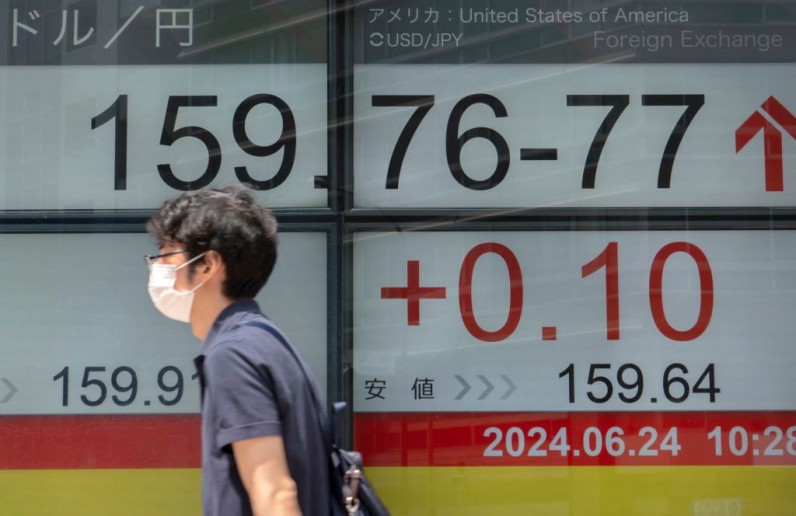
The Japanese yen fell to its lowest level against the dollar since December 1986, a major decline that has put currency markets on high alert for potential intervention by Japanese authorities. Per Reuters, as of Wednesday, June 26, the US dollar was trading at 160.39 yen, driven by a widening interest rate differential between Japan and the United States that continues to pressure Japan's currency.
Analysts noted that traders are testing the resilience of Japan's Ministry of Finance and Central Bank, which recently spent $62 billion to stabilize the yen after it crossed the 160 mark earlier this year.
Joe Tuckey, head of FX analysis at Argentex, emphasized the ongoing impact of carry trade strategies, where investors borrow in low-yielding currencies like the yen to invest in higher-yielding assets elsewhere, especially amid higher US interest rates ranging from 5.25% to 5.5%.
Japan's Interest Rate vs Dollar Assets
Despite Japan's modest interest rate increase from zero to 0.1% this year, the allure of higher returns in dollar-denominated assets continues to attract investors, reinforcing the dollar's strength against the yen.
Traders have seemingly discounted warnings from top Japanese currency diplomat Masato Kanda about potential market interventions, as recent efforts have had limited impact without corresponding rate adjustments.
Looking ahead, the market focus shifts to the possibility of a Bank of Japan rate hike later in July, which could temporarily support the yen. However, sustained recovery prospects may hinge on future Federal Reserve decisions regarding interest rates.
The dollar index, a gauge of the dollar's strength against other major currencies, increased to 105.99, its highest point since May 1.







Join the Conversation